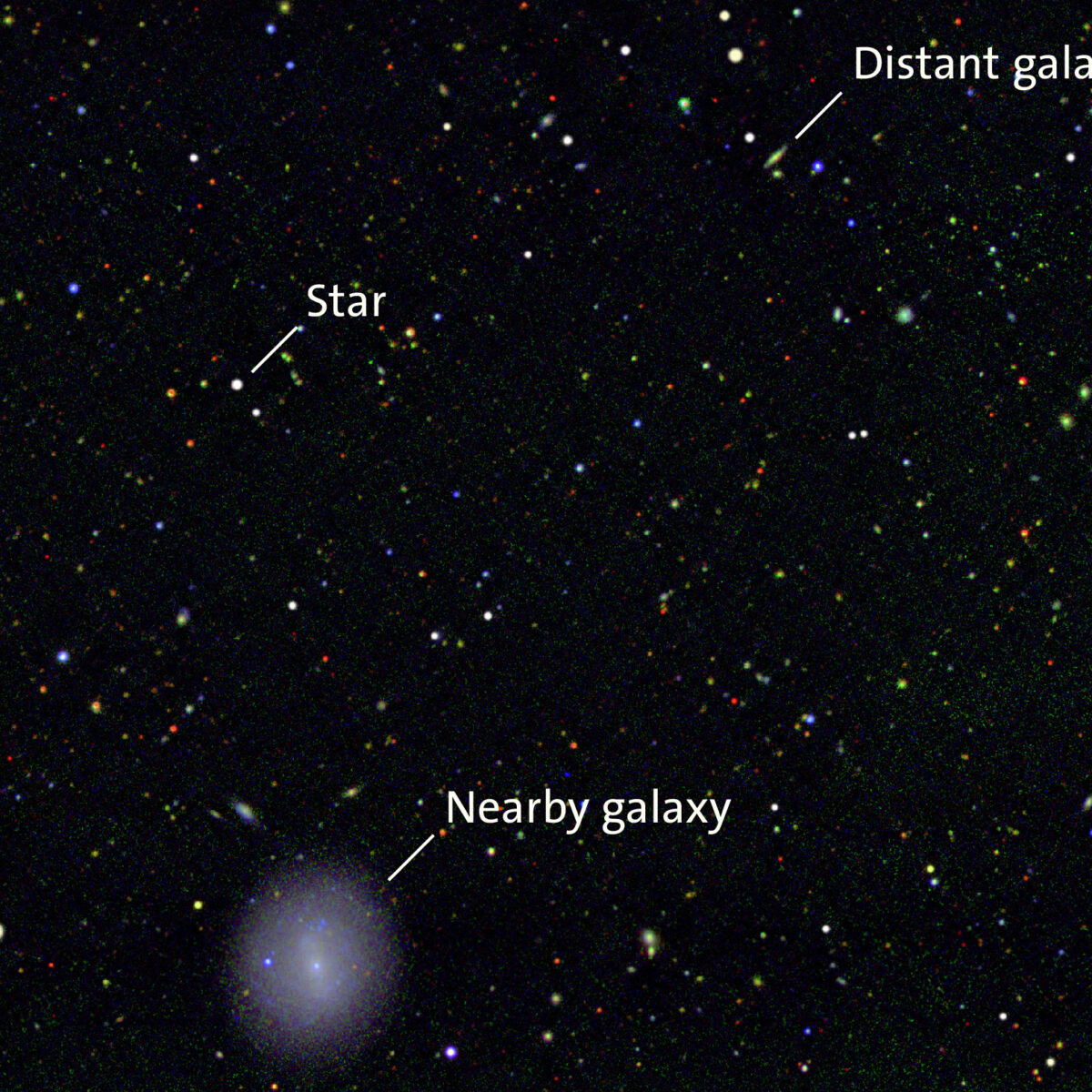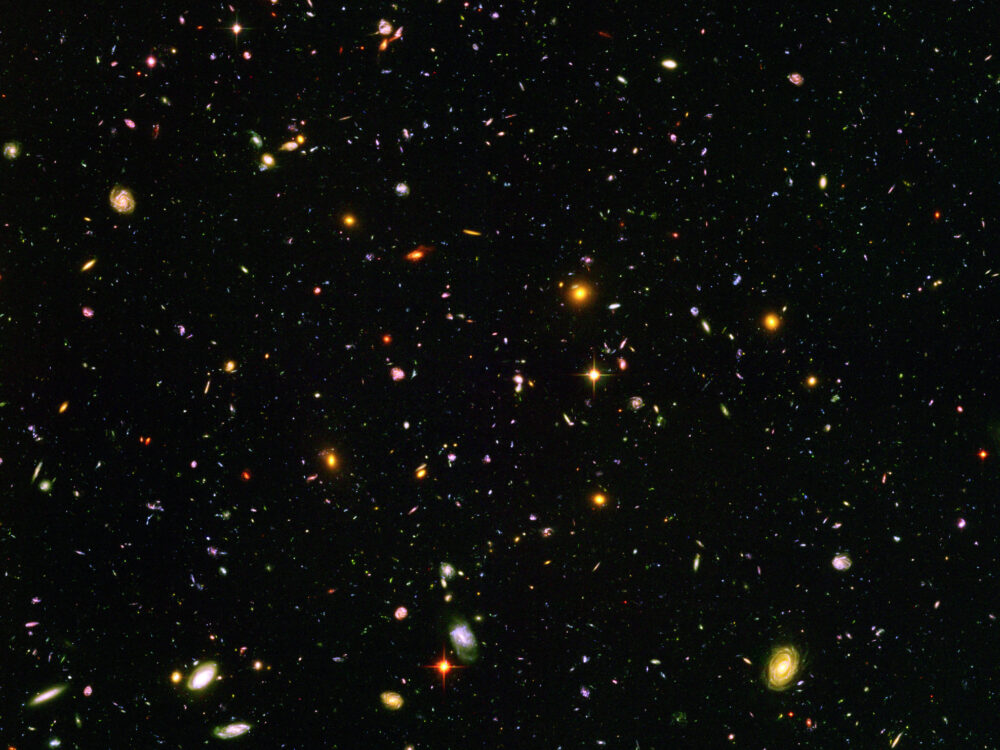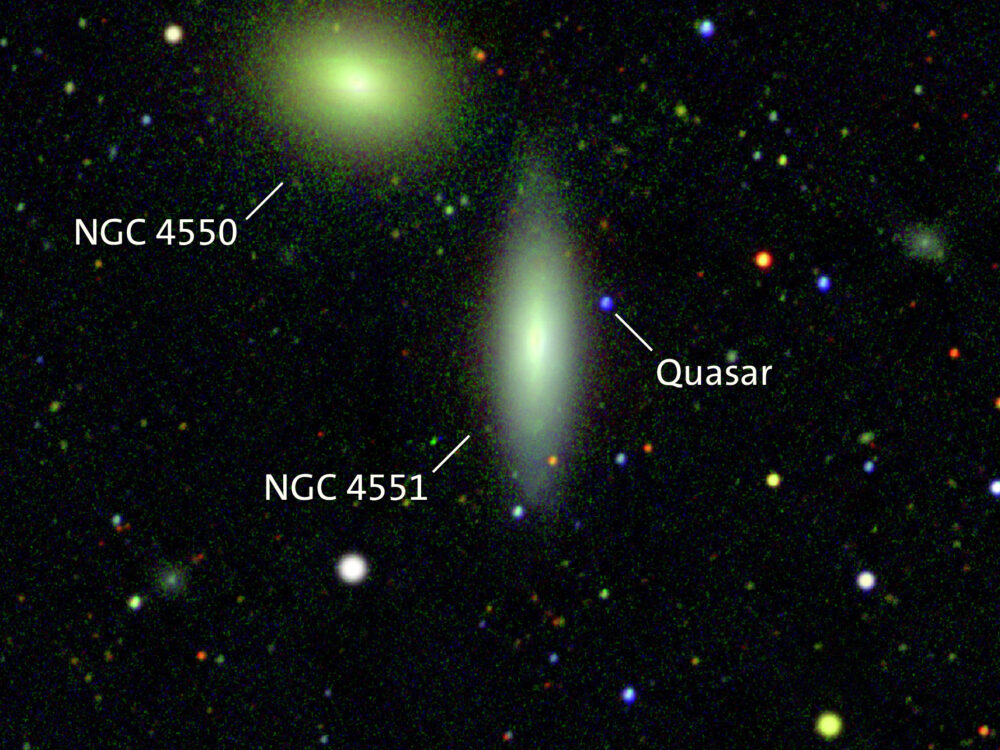The Depths of Space

The universe is three-dimensional. When we gaze up at the sky, however, we don’t see depth. Everything looks as if it is displayed on the inside of a dome.

The closest things we see are the Sun, Moon, and planets. The stars are farther away, but they are all part of the Milky Way Galaxy. Other galaxies exist beyond ours, scattered across ever-increasing distances, back to the beginning of time.

Space in Three Dimensions
The Big Picture covers 30.4 square degrees of sky primarily in the constellation Virgo. It may look flat, but the bright spots of light we see are at dramatically different distances from us. Some of the light comes from stars in our own galaxy, which by cosmic standards are very close to us. Nearby and distant galaxies, each teeming with billions of stars, make up nearly everything else shining in the darkness.
Across the Depths

When we look up at the sky, we see it filled with stars. If we study a tiny part of the sky for a long time with a telescope, we get the deep view shown by the Big Picture. The Hubble Space Telescope got the deepest view of all when it gazed at a small area of sky for 11 days. It saw a field filled with galaxies as they appeared when the universe was a quarter of its present age.

Quasars are the most distant objects we can see. They are active galactic cores powered by supermassive black holes at their hearts. Quasar 1232+125, which appears in the Big Picture near the galaxy pair NGC 4550/4551, is 6.5 billion light-years away.